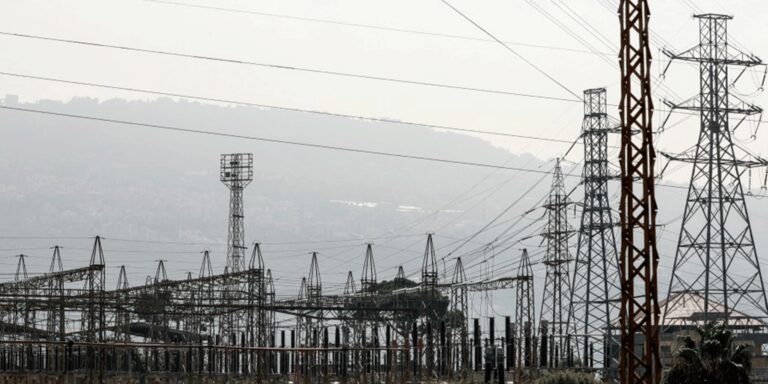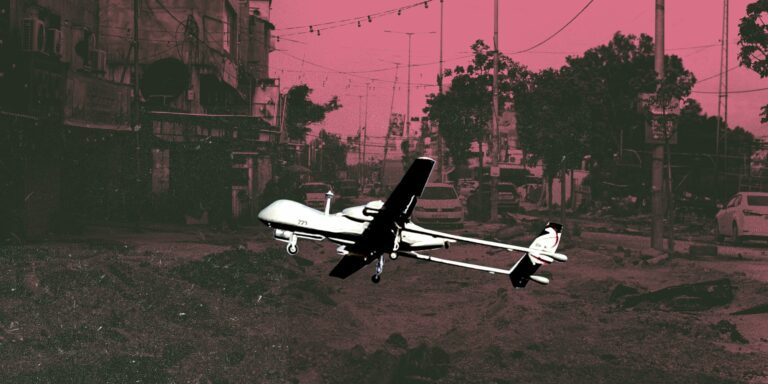Ali Al-Nawfali, 65, stands in the middle of a dry area, remembering how this used to be the Ezz river supplying the Al-Hawizeh marshes in Basra, and a source of income for him, his family and his animals. He is now considering migration; all other solutions have failed owing to drought and government inaction.
Al-Nawfali lives in the impoverished village of Nahr Al-Ezz on the southern border between Iraq and Iran. The river and significant amounts of water in the marshes have vanished, turning this into a dry, desolate place that the majority of residents are considering leaving. He lost his hunting job, some of his buffalo perished, and now his family and 3,000 other families in this hamlet are in danger of starvation and death, he laments.
“There is no water, no crops, nothing left for us. Women and children are perishing of thirst because no one cares about them or us or our families.”
The marshes were included on the UNESCO World Heritage List in 2016, but since then they have turned into desolate environments, losing much of their wildlife and inhabitants. The cause is drought, with a near-total lack of rain over the past three years. Another factor is the low volume of water flowing through the nearby rivers from Iran and Turkey, which has forced Baghdad to regulate the use of its reserves.
Dying buffalo and scarce water
The UN Food and Agriculture Organisation has sounded the alarm, stating in a report released in mid-July that the marshes had become one of the poorest places in Iraq due to the dramatic fall in marsh waters. This is one of the areas most impacted by water scarcity and climate change. The report emphasizes the disastrous impact on the livelihoods of over 6,000 rural families due to losing their buffalo, their sole source of income.
The marshes of Iraq, which stretch between the Tigris and Euphrates rivers, have been described as the Gardens of Eden; but this area, once rich in life, has been transformed into desolate land. Due to global warming, there have been frequent droughts with a detrimental effect on people, animals and plants. In the Marshes of Chabayish in Nasiriyah governorate alone, over 750 buffaloes have died as a result of a lack of water and high temperatures.
“The agriculture and marshes sectors are most affected by water scarcity because they are the two largest water consumers, especially with temperatures exceeding 50 degrees Celsius,” says Hatem Hamid, Director-General of the National Centre for Water Resources Management, noting that the high evaporation in the marshes cannot be compensated for. “We cannot assure 100 percent [water] for agriculture or the marshes.”
This is in light of the worst drought the nation has ever experienced, particularly in Dhi Qar governorate, which is losing a lot of its marshes and agricultural land and faces significant population displacement among farmers, fishermen and livestock breeders in danger of losing their only source of income. Hussein Al Rabat, head of the Federation of Agricultural Associations in Dhi Qar, says the water shortage has harmed 80 percent of the land, agricultural products and palm trees in the area.
Drought and desertification in Egypt
Climatic conditions in Iraq and Egypt are similar; large parts of both countries are very dry and face the Khamasin (Tuz) winds, which come from the Western Desert loaded with thousands of tons of sand, severely affecting crops and increasing the rate of desertification.
Yahya Musa, who lives in the Siwa Oasis region 300 kilometers southwest of the Egyptian governorate of Marsa Matrouh, was putting the finishing touches on a programme for a group of tourists visiting Fatnas Lake when he was shocked by the drought that had altered the lake’s features. “I was frightened to face the tourist group, because I had described to them the spectacular sunset scene that distinguishes Fatnas Lake.”
The Egyptian Ministry of Irrigation announced on August 9 that it was implementing irrigation and drainage system development measures for Siwa Oasis, in order to find radical solutions to the issue of increased salinity in the water of the cracked limestone reservoir, as a result of haphazard drilling of wells. This announcement came after days of widespread images of drought being shared on social media.
In an official statement, the ministry confirmed that it is working to solve the problem of increasing quantities of agricultural drainage water causing the groundwater level to rise in the agricultural lands in the oasis, with negative effects. It indicated that levels have gradually begun increasing again with the advent of autumn and winter, without water congestion.
Engineer Ahmed Youssef, Director of the Directorate of Agriculture in Marsa Matrouh, confirms that the unorganized drilling of wells has contributed to the decline of many crops, including olives and palms in Siwa, highlighting the fact that nearly 30 percent of palm plantations out of a total of 11,000 acres have been affected by salinity. He emphasizes that this has led to the conversion of numerous crops, including barley, into pasture and that agricultural areas in Marsa Matrouh governorate have been affected by climate change, particularly since the majority of the region depends on erratic rainfall. He notes that out of 450,000 feddans, about 250,000 feddans depend on rain, and that the majority of land in Matrouh is prone to substantial erosion.
According to Dr Raafat Khader, former Director of the Egyptian Desert Research Centre, Egypt is one of the nations most vulnerable to drought and desertification – it is in a very arid region, with high temperatures and very little rainfall. He notes that around two million feddans were lost between the end of the 1980s and 2011 and that Egypt loses around 30,000 feddans of land every year.
Hamid Al-Nayef, a spokesman, explains that the ministry has had to cut its agricultural plan by half due to the effects of desertification, which has affected 70 percent of agricultural land. Due to water shortages and climate change, only 2.5 million dunams of an intended 6 million dunams were planted.
Hassan Al-Tamimi, head of the Agricultural Associations in Iraq, notes that over 13 million dunams of agricultural land have been lost over the past few years as a result of water shortages and climate change. This has had a negative impact on farmers’ livelihoods, leading to significant unemployment, and has reduced the livestock wealth of the country.
According to Dr Hadi Hashem, General Coordinator of the Food and Agriculture Organisation, the negative impacts of climate change have made it more difficult for farmers to continue working on their farms, leading them to abandon their barns and stop raising cattle.
From dead buffaloes in the marshes of Al-Amarah and Nasiriyah in southern Iraq to the loss of nearly half the reem deer in the Samawa desert, the story is the same. In a reserve established in 2007, deer numbers fell from 148 to 87 within a month, according to veterinarian Turki Al-Jiashi, Director of the Sawa Nature Reserve project in Al-Muthanna governorate. Here, Sawa Lake – one of the best-known natural lakes in Iraq – has completely dried up due to climate change.
Iraq is one of the five countries most vulnerable to climate change and desertification, says the Ministry of Environment. Jassim Al Falahi points out that climate change is threatening food, water and health security in the country. He warns that the scale of the environmental disaster threatens the country’s security and future.
It is the same in Egypt, according to Dr Alaa El-Din Sultan, a wildlife preservation specialist at the Max Planck Institute in Germany, explaining that climate change and noticeably higher temperatures have had an impact on Egyptian deer. He emphasises that if conservation and preservation initiatives for threatened animal species are not put in place, deer and Arab tigers will vanish from the desert region of North Africa and the Arabian Peninsula by the year 2070.
Hussam El-Din Al-Aqami, Director of Conservation Planning and Geographic Information Systems at the King Salman bin Abdulaziz Royal Reserve Development Authority, who prepared a previous study on the loss of Egyptian deer in the desert region as a result of drought, says: “Some of the animals in the Egyptian plains will be greatly affected by global warming, and will be forced to migrate locally towards higher lands that have better environmental conditions.” He notes that the Egyptian deer population will decrease by up to 30 percent in the Western Desert around Siwa and the oases, as well as in the Eastern Desert along the Red Sea coast.
Buried landmines
In a speech during a meeting of the Arab Affairs Committee of the House of Representatives in January, Dr Yasmine Fouad, the Egyptian Minister of Environment, said that Egypt’s heat emissions are less than 1% of the global total, but despite this serious damage is being inflicted on Egypt and other Arab countries. She pointed out that 84% of agricultural land in the Arab countries has been affected by climate change.
According to a trusted source in the Egyptian Ministry of Agriculture, workers occasionally come across war debris on construction sites and report it to the appropriate authorities so that it can be dealt with immediately. The same source claims that due to the recent swift pace of clearance, the number of mines found while working has decreased significantly. The different wars that devastated Egypt and Iraq have had an impact on their land; these two nations have the most buried mines in the Arab world.
El Alamein, 260 kilometers from the capital, is a city on the northern coast in Marsa Matrouh governorate. The Second World War resulted in the contamination of the majority of the city’s land with military remnants and mines, with a lack of maps showing their precise locations.
We went to the house of Sheikh Douma Afoun el-Aqari, who at 76 is one of the few people still alive to have witnessed the war in the city. Sitting on a pillow stuffed with cotton in a vacant area around his house, shaded by palm trees, he recalls a scene that struck him with fear of farming when he was a young man.
“I was cultivating a plot of land in the city of El Alamein with barley, but the plough got caught up in a group of interconnected mines, and it almost exploded and took my life. Whenever I remember what happened, my body trembles, and I can’t believe I’m still alive. Fortunately, the plough did not strike the mine. I was able to take it out of the tangle of mines, but now I can’t carry any agricultural tool and I see that the war stole my life.”
He continues: “I had wanted to cultivate my family’s food with my own hands, but I lost that feeling because I was forced to leave school and other requirements of life because of the war. We have lived a horrible life since our birth, full of fear and terror, and it will continue until death owing to the repercussions of war.”
In a desert region close to his home in the town of Tel El-Eis, we encounter Jaber Salem, a young man in his thirties who works as a caretaker for Italian cemeteries in El Alamein. He explains that he volunteers to be a guide for newcomers to the city, to protect them from mine-contaminated regions, and goes on safari and hunting expeditions with them. He does this because many people in his village have been harmed by land mines. Fixing his gaze onto the desert regions surrounding him, he declares: “If we were able to farm these places, we would not import a grain of wheat from abroad.”
El Alamein was one of the most significant areas planted with wheat, which depends on rainwater; Egypt never needed to import wheat until the majority of this land was laid with mines during the Second World War.
On the official level, the Egyptian Minister of International Cooperation, Dr Rania Al-Mashat, announced during a meeting of the Foreign Relations Committee of the House of Representatives in early June that over half of the land containing mines and remnants of war on the northern coast has been cleared – a total of 5,100 square kilometers, 57 percent of the targeted area. She also pointed out that as a result of these efforts, the new city of El Alamein, the Dabaa nuclear plant and the El Hamam Canal Extension Project have been established.
Leftovers of war
At the end of August, the Egyptian Armed Forces announced the signing of a protocol with the Executive Secretariat for Demining at the Ministry of International Cooperation, to clear the remnants of war from the desert hinterland of villages and hamlets with a large number of inhabitants in Al Alamein, Al Hamam, Al Dabaa, Matrouh, Al Nujaila, Barani and Salloum. A military spokesman confirmed the use of the mine-cleared regions for land reclamation and farming, in addition to oil extraction, in a statement posted on his official Facebook page.
Dr Ahmed Amer, a mine specialist and member of the Egyptian Network for Climate Change, explains that the mines prevented the government from exploiting vast areas of Egyptian land, in addition to harming medicinal and fragrant plants. Amer, who has a master’s degree and doctorate in mine-related issues, stresses that the torrents pose a threat to the lives of residents – moving the mines dispersed across the city of Salloum’s high hills to the urbanised lowlands.
The area, which spans more than 10,000 dunams 55 kilometers southwest of Karbala governorate in southern Iraq, is the resting place of a variety of weaponry that belonged to Saddam Hussein’s dictatorship. Abu Ali, who resides in that region, says that he and his family are used to walking amid rockets and grenades and are always terrified of losing their lives. He adds that he used to find a new sort of war projectile every day and now recognizes different types of light, medium and heavy weapons. Even though a project to cultivate a portion of this area was started, it was carried out with great caution for years, and only 1,500 dunams of the land has been planted as a result of the difficulties and risks involved.
Iraqi Minister of Environment Jassem Al-Falahi says, “Iraq is considered the first in terms of mines, explosive devices and remnants of war as a result of decades of wars, instability and confronting terrorism.” Solving this complex problem will take a long time, he says, particularly since terrorist group ISIS at one point after 2014 had control of large parts of the country. This exacerbated the crisis, because the group booby-trapped large regions of the country with mines and explosives.
The Department of Mine Affairs of the Iraqi Ministry of Environment estimates that around 6,000 sq km of Iraqi land has been cleared. But the spread of war remnants and mines throughout the nation has led to the loss of innocent lives, on top of the thousands of lives lost in recent decades of war and security problems.
Nibras Al-Tamimi, an official at the Southern Centre for Mine Affairs in the Ministry of the Environment, says, “In the governorates of southern Iraq over the last three decades, about 18,000 people have been killed or wounded owing to mines and remains of war.” He adds that although local, national and international organizations, as well as the Ministries of Defence and Interior, are working very hard to clear it, there is still more than a billion square meters of contaminated land. A hundred children were killed or injured in the first nine months of 2021 as a result of mines and other explosive remnants of war in Iraq, according to UN statistics.
Dr Ahmed Diab, the UN’s top water expert and a former participant in formulating Iraqi water policy, says Iraq has to update its agricultural, water and environmental policies to make them adaptable enough to survive shocks. He also has a proposal to confront the drought that has hit the marshes by using desalinated sewage water (hyper-saline water not suitable for human use) to cultivate these areas, provided that underground reservoirs are used to pump water into them for cultivation.
Dr Mohamed Sayaf, a researcher at the Agricultural Research Centre, also suggests using the desert backwaters of Egyptian coastal cities to grow crops through seawater desalination, pointing out that all Egyptian governorates except Gharbia have these backwaters, with a total estimated area of 3.5 million feddans.
Sayaf outlines three key elements. The first is the use of solar-treated seawater; the second is the use of treated wastewater to plant trees in order to prevent desertification, increase oxygen levels and lower temperatures. The third is the use of groundwater – the Egyptian government has launched a project covering one and a half million acres and expects to add another million. There is also an expected economic return from using the seeds of certain trees to extract aircraft oils, the cultivation of which is commensurate with the Egyptian climate.
The story was supported by the Candid Foundation’s journalism grant.





